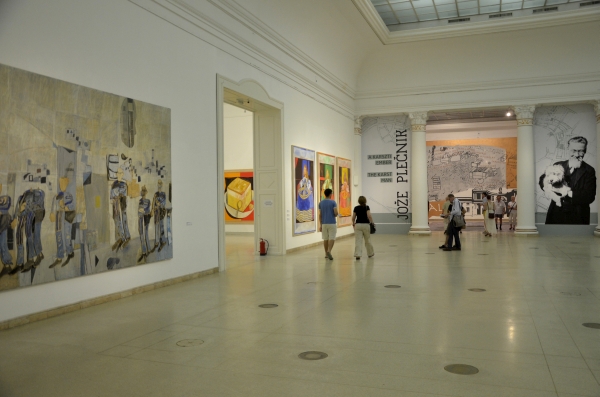Plečnik – Zala – Aquila
Three Exhibitions in Kunsthalle Budapest
Text: Áron Petneki

Photo: Imre Kővágó Nagy
The exhibitions in Art Gallery (Kunsthalle) Budapest present the oeuvres of a painter, a sculptor and an architect, respectively. The characters of the artists, namely János Aquila, György Zala and Jože Plečnik are separated from each other by historic periods and styles, whilst also are also associated with contemporary Slovenia. Johannes Aquila’s art and character is documented here by Gothic frescoes found in Velemér, Turnišče, Martjanci or Radkersburg, as well as by murals gracing the church of the Augustinian religious order in Fürstenfeld found in 1968. The large-scale historic monuments by György Zala are found in various sites all over Hungary. The best known of them is in Heroes’ Square, Budapest, but some of his sculptures travelled as far as Vienna: such an example is the grave monument erected in honour of Queen Elizabeth in the Capuchin crypt in Vienna. Works by Jože Plečnik were re-discovered in the 1970s and 80s concerning their significance for the history of architecture. The artist had studied at Otto Wagner’s, and left behind an oeuvre comprising not only Zacherl House on the corner of Brandstätte and the Bauernmarkt in Vienna, or the Holy Spirit church in Ottakring which strikes us with its „Secession-infused Neo-Classicist” architecture, and the Church of the Holy Heart in Prague’s Vinohrady district, but also includes the reconstruction project of the Royal Castle of Prague, Žale cemetery in Ljubljana, the University Library, bridges of the Ljubljanica as well as St John’s Square.






